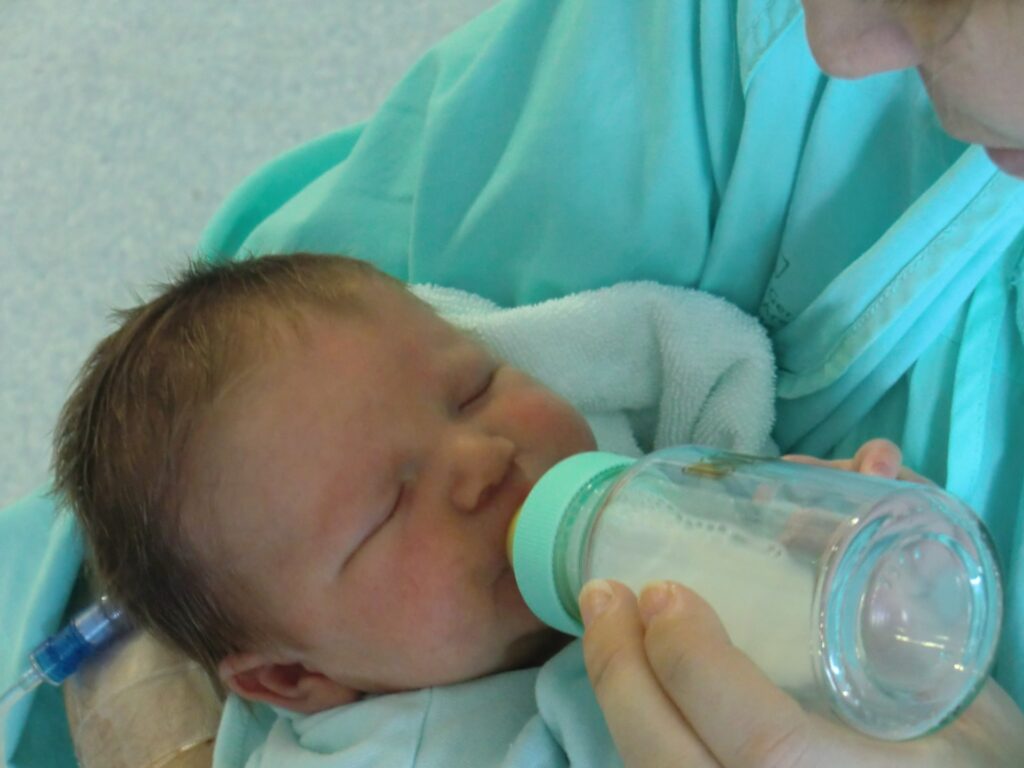Should You Worry About Nipple Confusion?
Introduction
Breastfeeding is considered one of the most natural and healthy ways to nourish a newborn baby. However, sometimes it can be challenging, especially for first-time mothers. One issue that has been a topic of ongoing research and debate is nipple confusion. In this article, we will explore what nipple confusion is, its prevalence, and the impact it can have on breastfeeding outcomes.
What is Nipple Confusion?
Nipple confusion is a phenomenon that occurs when a baby is introduced to multiple feeding methods, such as breastfeeding and bottle-feeding, which can cause confusion and difficulty in the baby’s ability to breastfeed. When a baby breastfeeds, they need to use different muscles and sucking motions compared to when they are bottle-fed. When exposed to both methods, the baby can become confused and have difficulty latching onto the breast or breastfeeding effectively due to altered feeding form.
How Common Is Nipple Confusion In Babies?
Some studies have suggested that this altered form is relatively common, while others have found it to be a rare occurrence. A systematic review published in 2016 found that the evidence was mixed, and some studies suggested that it was more likely to occur in newborns who were given a bottle in the first few days of life, while others found it to be more likely to occur in older infants who had already established a breastfeeding routine.
A more recent study published in 2021 looked at the prevalence of nipple confusion and its impact on breastfeeding outcomes among a group of first-time mothers in the United States. The study found that it was relatively common, occurring in about one-third of infants. However, it did not appear to have a significant impact on breastfeeding outcomes.
The Impact on Breastfeeding
While the evidence on the prevalence of nipple confusion is mixed, there is some evidence to suggest that it can have an impact on breastfeeding outcomes. There is a belief that a baby will become frustrated or upset when trying to breastfeed, which can lead to a decrease in milk supply and difficulties with latching. This may be attributed to an altered use of muscles.
If a baby is not breastfeeding effectively, this can also lead to nipple soreness and discomfort for the mother, which can further impact breastfeeding success. In some cases, nipple confusion causes a decrease in the frequency and duration of breastfeeding, which can ultimately result in the mother weaning her baby earlier than desired.
Preventing Confusion
Preventing nipple confusion is an essential aspect of supporting successful breastfeeding outcomes. Healthcare providers and caregivers can take several steps to help prevent nipple confusion, including:
- Using a slow-flow nipple and correct bottle: When introducing a bottle, it is essential to choose a slow-flow nipple that mimics the slow and steady flow of breast milk. A fast-flow nipple can cause a baby to become accustomed to a faster flow, which can lead to difficulty latching onto the breast.
- Using paced bottle feeding: Paced bottle feeding involves holding the bottle in a way that mimics breastfeeding and taking frequent breaks during the feeding to allow the baby to rest and regulate their sucking.
- Supporting the mother’s breastfeeding goals: Providing education and support to mothers on breastfeeding techniques, including proper latching and positioning, can help prevent nipple confusion and support successful breastfeeding.
- Cup Feed: Although cup feeding isn’t common in Western societies it uses the muscles of breastfeeding where a bottle uses extra. It may support the transition to the breast.
What about pacifiers you may ask? Well, there isn’t a lot of evidence supporting pacifier use as a reason for nipple confusion. With a paucity of support for bottles there is reason to believe concerns about nipple confusion with pacifier use are also unwarranted.
Conclusion
In conclusion, nipple confusion is a topic of ongoing research and debate, and while the evidence on its prevalence and impact on breastfeeding outcomes is mixed, it is clear that it can have an impact on some infants. Preventing altered feeding in an infant is an essential aspect of supporting successful breastfeeding outcomes. Healthcare providers and caregivers can take several steps to help prevent the occurrence, including using a slow-flow bottle and nipple, using paced bottle feeding, and supporting the mother’s breastfeeding goals. By providing education and support to mothers, we can help prevent nipple confusion and support successful breastfeeding for both the mother and baby.

